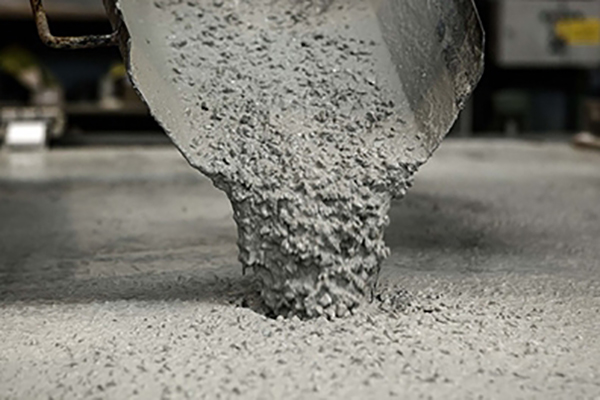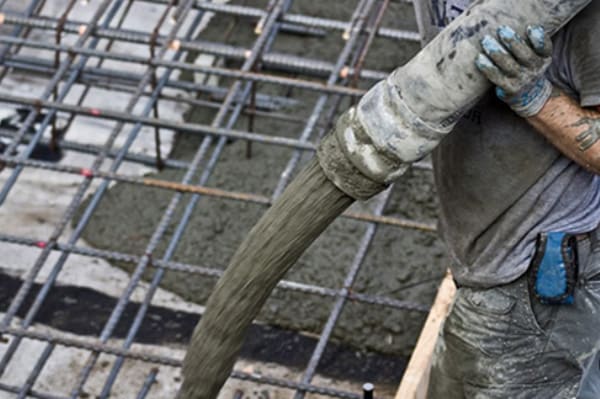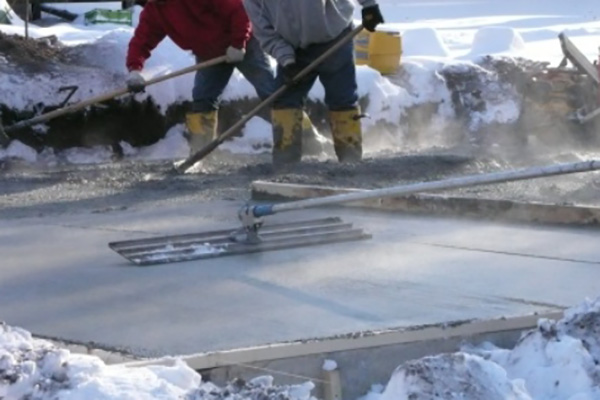Hello, my name is Allen, and I’ve spent my career in the building materials industry. From my position as a factory owner with seven production lines, I’ve seen firsthand how crucial the right materials are for a successful construction project. While my expertise lies in specialized components like aluminum pastes and finished products like aerated concrete blocks, the core principles of quality, safety, and performance are universal. One of the most common and dangerous issues I see on job sites and in finished properties is slippery concrete. A beautifully finished concrete surface can quickly become a major liability. This article is for the professionals—the procurement officers, the construction managers, and the developers—who understand that quality isn’t just a feature; it’s a requirement. We will dive deep into why concrete becomes slippery, how to fix slippery concrete effectively, and how to choose the right sealer and anti-slip solutions to improve traction and ensure safety.
Why Does Sealed Concrete Become So Slippery?
The irony of protecting a concrete surface is that the very thing meant to preserve it can also make it hazardous. Concrete in its natural, unsealed state has a porous, slightly rough texture that provides a decent amount of grip. However, when you apply a film-forming sealer, like an acrylic or epoxy coating, you essentially create a smooth, non-porous plastic layer over that texture. This new sealed surface repels water, which is great for preventing stains and moisture damage, but it also means that water sits on top, creating a perfect storm for a slip. When wet, this smooth coating dramatically reduces the coefficient of friction, turning a safe walkway into a serious hazard.
The problem is often magnified by the type and amount of sealer used. A thick, high-gloss sealer will almost always be more slippery than a matte-finish or penetrating sealer. A penetrating sealer works by soaking into the concrete’s pores rather than forming a film on top, which helps maintain the natural texture of the concrete. However, film-forming sealers offer superior protection against stains and wear, which is why they are so popular. For business owners and facility managers, especially those overseeing large areas like warehouse floors or commercial patios, understanding this dynamic is the first step. The goal is not to avoid sealing concrete but to learn how to seal it intelligently to prevent the surface slippery effect. This involves modifying the sealer itself to reintroduce the friction that was lost.

What Are Anti-Slip Additives and How Do They Work?
This brings us to the most effective solution: the use of anti-slip additives. An additive is essentially a very fine, hard aggregate that you mix directly into the concrete sealer before application. These particles disperse throughout the coating and create a micro-texture on the sealed surface. This texture, while often barely visible to the naked eye, is significant enough to increase traction and dramatically improve slip resistance, especially when wet. Think of it as adding microscopic speed bumps to your concrete surface. Your foot can now grip onto these tiny particles instead of hydroplaning on a film of water.
The beauty of a high-quality anti-slip additive is that it provides a durable, lasting solution without dramatically changing the look of your concrete. The use of grit additives has become standard practice for professionals who want to safeguard against slip-and-fall accidents. These additives are made from various materials, each with unique properties. Common types include silica sand, aluminum oxide, and micronized polymers. The choice of additive depends on the application, the type of sealer being used, and the desired level of grip versus comfort underfoot. A properly selected grit additive is the key to creating a non-slip surface that is both safe and aesthetically pleasing.
Can You Add Grit to Any Concrete Sealer?
This is a critical question for any procurement officer or project manager. The short answer is no, not every grit additive is compatible with every concrete sealer. Compatibility is key to performance. Most anti-slip additives are designed to be suspended in solvent-based or water-based acrylic sealers. They are also commonly used with epoxy and urethane concrete coatings. The key is to ensure the additive is chemically compatible with the sealer‘s base. Using the wrong combination can cause the additive to clump, dissolve, or fail to bond properly within the coating, rendering it useless.
Furthermore, it’s crucial to follow the manufacturer’s recommendations for both the sealer and the grit additive. Some sealers are too thin to properly suspend a heavy grit, causing the particles to sink to the bottom of the container and the application tray, resulting in an uneven, ineffective finish. For example, a fine-ground polymer additive like micronized polypropylene is lightweight and works well when incorporated into an acrylic sealer because it tends to stay suspended better than heavier aggregates. Always check the technical data sheets for both products. As someone who manufactures materials to precise specifications, I can’t stress this enough: consistency comes from following the formula. Don’t experiment on a client’s project. Use a proven system to ensure reliable slip resistance.
What’s the Best Anti-Slip Additive for Decorative Concrete?
When dealing with decorative concrete, such as stamped concrete or surfaces with a unique stain, the aesthetics are just as important as the safety. No one wants to ruin a beautiful, expensive finish with a gritty, cloudy coating. This is where the choice of anti-slip additive becomes an art. You need an additive that provides grip without compromising the visual appeal of the decorative concrete. For these applications, the goal is reducing slipperiness while maintaining clarity.
The best options are typically translucent or white particles that are ground to a very fine mesh size. These tiny particle sizes are less likely to be seen in the final coating. Here’s a comparison of common choices:
| Additive Type | Texture/Feel | Visibility | Best For |
|---|---|---|---|
| Silica Sand | Gritty, rough | Can be visible | Industrial floors, utility areas |
| Aluminum Oxide | Sharp, very durable | Slightly visible | Driveway, high-traffic walkways |
| Micronized Polymer | Fine, less abrasive | Nearly invisible | Stamped concrete, pool decks, clear sealers |
For most decorative concrete projects, micronized polymer additives are the top choice. They provide a smoother feel to the coating than sand or aluminum oxide, making them more comfortable for bare foot traffic, and they are virtually invisible in clear decorative concrete sealers. This allows you to create a safe, non-slip concrete surface without sacrificing the intricate patterns and colors of your stamped concrete work. You get the necessary slip resistance without the undesirable rough surface of industrial-grade solutions.

How Do You Properly Mix and Apply a Sealer with a Grit Additive?
Proper application is just as important as selecting the right materials. A rushed or incorrect application can lead to a poor finish and inadequate slip resistance. Here is a professional-grade process to follow:
- Surface Preparation: The concrete surface must be completely clean, dry, and free of any old, flaking sealer or contaminants. Use a pressure washer if necessary and allow ample time for the concrete to dry out.
- Mixing: Do not dump the entire container of grit additive into a full pail of sealer. The particles will settle. The professional method is to apply the sealer in two thin coats. The first thin coat of sealer acts as a primer and base layer.
- Broadcasting (Recommended Method): After rolling on the final thin coat of sealer, use a hand broadcaster to lightly and evenly sprinkle the grit additive over the wet coating. This ensures the particles sit at the very top of the sealed surface, where they provide maximum traction.
- Mixing-In (Alternative Method): If you must mix the additive into the sealer, only mix it into the amount of sealer you will use for the final coat, and only right before you begin. Stir frequently during application with a drill mixer at low speed to keep the grit suspended. If using a sprayer, ensure the tip is large enough to handle the aggregate without clogging.
- Back-Rolling: After broadcasting or rolling on the sealer/grit mixture, it’s often a good idea to gently back-roll the area with a now-dry roller. This helps to set the particles evenly into the coating and ensures a uniform surface texture.
A crucial tip from the factory floor: Control the amount of sealer you use. A common mistake is applying the coating too thickly. A heavy coating can swallow up the grit additive, burying it beneath the surface and negating its effect. Two thin coats are always better than one thick one for creating a durable, non-slip finish.
Are There Alternatives to Using a Grit Additive to Make Concrete Less Slippery?
While a grit additive mixed into a sealer is one of the most popular and effective methods, it’s not the only way to make concrete less slippery. Depending on the situation, other techniques might be more suitable. One alternative is to use an anti-slip paint or a dedicated anti-slip coating. These products come with the additive already pre-mixed in a high-solids, durable base, often an epoxy or urethane. This non-slip paint is ideal for areas needing high visibility and maximum protection, like safety walkways or loading docks.
Another approach is to alter the concrete surface itself. Acid etching can be used to lightly dissolve the top layer of cement paste, exposing the fine aggregate and creating a rougher, more porous surface texture. This can be effective, but it offers less protection against stains and wear compared to a sealer. For new concrete installations, a broom finish is a simple way to build in texture from the start. For existing slippery concrete, however, applying a high-quality sealer with a properly chosen additive generally provides the best balance of safety, durability, and aesthetics. These concrete coatings protect the slab while also delivering the necessary slip resistance.

How Does Aluminum Oxide Improve Slip Resistance on a Driveway?
For high-traffic, high-abuse areas like a driveway, you need a high-performance solution. This is where aluminum oxide shines. Aluminum oxide is an extremely hard and durable aggregate, ranking just below diamond on the Mohs scale of hardness. When used as a grit additive, it creates a tough, long-lasting non-slip surface that can withstand vehicle traffic, snow shovels, and harsh weather. It’s the same material used to make sandpaper and grinding wheels, which tells you everything you need to know about its ability to enhance traction.
When you apply a sealer to increase the longevity of a driveway, you make it more susceptible to becoming slippery, especially on sloped surfaces. Adding aluminum oxide to the final coating of sealer directly counteracts this. The sharp, angular nature of the particles aggressively bites into tires and shoe soles, which significantly improves traction. While it may create a slightly rougher surface than other additives, for a driveway where safety and durability are the primary concerns over comfort, aluminum oxide is an exceptional choice. It’s also a great option to provide grip on exterior walking surfaces where you might need to eliminate snow or ice with concrete-friendly snowmelt chemicals.
What Are the Key Considerations for Sealing a Concrete Pool Deck?
A concrete pool deck is perhaps the ultimate test for slip resistance. It’s a surface that is constantly wet, sees heavy bare foot traffic, and is a prime location for slip-and-fall accidents. When sealing a concrete pool area, you cannot afford to get it wrong. The primary concern is creating a surface that is safe and non-slip even when water is everywhere. The phrase slippery when wet was practically invented for poorly sealed pool decks.
For this application, you must use a sealer and additive combination that provides grip but is also comfortable for bare feet. A coarse grit like silica sand would be too abrasive. This is the ideal scenario for a micronized polymer additive. These fine, plastic particles offer excellent slip resistance without feeling like sharp sandpaper. They give the feel to the coating surface a soft texture, not a rough one. Additionally, the sealer for concrete used around a pool should be a high-quality acrylic that is UV stable and resistant to pool chemicals. Applying a sealer with a fine polymer grit additive is the professional standard to safeguard the area around a concrete pool deck and prevent accidents.
Maintaining Your Non-Slip Concrete Surface: What’s Involved?
Creating a non-slip concrete surface isn’t a one-time job; it requires regular maintenance to remain effective. Over time, the peaks of the grit additive can wear down from foot traffic and cleaning. The sealer itself will also degrade due to UV exposure and weather. To keep the surface safe, it’s important to clean it at regular intervals. Use a mild detergent and a brush, and avoid overly aggressive scrubbing that could dislodge the grit particles. While a pressure washer can be used, keep the nozzle at a safe distance to avoid damaging the coating.
Eventually, you will need to reseal the surface to maintain both its protective qualities and its slip resistance. For most residential applications, you may need to apply a fresh thin coat of sealer with a new broadcast of grit additive every 2-4 years. For commercial or high-traffic areas, an annual inspection and possible reseal might be necessary. Staying on top of this maintenance ensures the coating continues to perform as intended and the concrete around your property remains safe and easier to clean.
Why Consistency in Material Science is Key to Performance
As a manufacturer, I live in a world of precise measurements and consistent outcomes. Whether it’s ensuring the uniform particle size in a batch of aluminum powder or the dimensional accuracy of a concrete block, I know that my customers depend on reliability. This same principle applies directly to the sealers and additives we’ve discussed. When a procurement manager like Mark Thompson sources materials, he needs to know that the product he receives in October will perform identically to the one he received in May.
This is why the quality of an anti-slip additive matters so much. A reputable manufacturer will provide a grit with consistent particle sizes, ensuring a uniform texture and predictable slip resistance. In my own field, we produce high-quality building materials like ALC Wallboard and AAC Block. The performance of these products relies on the precise chemical reactions of their components. For instance, the effectiveness of our aluminium pastes for aerated concrete is entirely dependent on consistent particle distribution to achieve optimal gas generation. The same dedication to quality control is what separates a high-performance sealer and additive system from an inferior one that delivers inconsistent, unreliable results. When you choose your materials, partner with a supplier who understands and prioritizes this level of manufacturing excellence. That is how you avoid project delays, ensure compliance with building codes, and deliver a final product that is safe, durable, and effective. As a professional factory specializing in building materials, we stake our reputation on it.
Key Takeaways to Remember:
- The Problem: Film-forming sealers create a smooth, non-porous coating that becomes slippery, especially when wet.
- The Solution: The most effective way to fix slippery concrete is by mixing an anti-slip additive into the final coat of sealer.
- Choose the Right Additive: Use fine polymer grit for decorative concrete and pool decks to preserve aesthetics and comfort. Use durable aluminum oxide for high-traffic areas like a driveway.
- Application is Crucial: Apply two thin coats of sealer. For best results, broadcast the grit additive onto the wet top coat rather than mixing it all in at once.
- Consistency is King: Always choose a high-quality sealer and additive from a reputable manufacturer to ensure consistent particle sizes and reliable slip resistance.
- Maintenance Matters: Clean the surface regularly and plan to reseal every few years to maintain a safe, non-slip finish.
Post time: 7 月-18-2025




